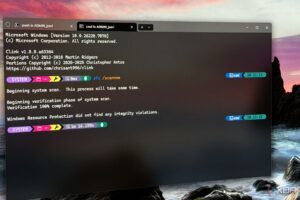
Last week saw significant developments in the cybersecurity landscape, including a critical vulnerability patch for the Windows kernel and the exploitation of a suspected zero-day flaw in Fortinet’s FortiWeb. These incidents highlight the ongoing challenges of cyber threats and the importance of robust security measures.
Key Vulnerabilities and Legislative Actions
On November 14, 2025, Microsoft released updates addressing over 60 vulnerabilities, including an actively exploited flaw in the Windows kernel, identified as CVE-2025-62215. This patch is vital for organizations to mitigate potential attacks. In a related update, the Cybersecurity and Infrastructure Security Agency (CISA) added another vulnerability, CVE-2025-21042, affecting Samsung mobile devices, to its Known Exploited Vulnerabilities catalog. Federal agencies in the United States have been directed to remediate this issue by December 1, 2025, emphasizing the urgency of addressing these security risks.
In the UK, the government has introduced the Cyber Security and Resilience Bill. This legislation aims to enhance the digital defenses of essential public services and modernize existing cybersecurity regulations. Such initiatives are crucial in strengthening national security against evolving cyber threats.
Insights from Industry Leaders
Several interviews with industry leaders shed light on effective cybersecurity strategies. In a discussion with Help Net Security, Andrea Succi, Group CISO at Ferrari Group, emphasized the integration of cybersecurity into logistics. He highlighted the necessity of protecting data alongside physical assets, advocating for a layered defense approach. Succi pointed out that maintaining client trust relies heavily on awareness, collaboration, and resilience.
Chris Wheeler, CISO at Resilience, shared insights on managing changing cybersecurity budgets. While overall spending on cybersecurity is increasing, he noted that many organizations struggle to align these increases with their most pressing needs. This disconnect often leads to a reallocation of funds, underscoring the need for effective measurement of return on investment and alignment with business objectives.
Paul J. Mocarski, VP & CISO at Sammons Financial Group, addressed the critical nature of ongoing threat assessments. He explained that insurance carriers are adapting their cybersecurity strategies through AI-driven automation and robust third-party risk management, ensuring they remain prepared against potential threats.
Cameron Kracke, CISO at Prime Therapeutics, discussed the complexities of achieving cohesive security visibility within the healthcare ecosystem. He emphasized the importance of interoperability and strategic investment in enhancing resilience across hospitals, clinics, and telehealth services.
Adnan Ahmed, CISO at Ornua, cautioned against missteps in cybersecurity strategy development. He advised organizations to first understand their risks before focusing on technology, advocating for an embedded cybersecurity approach throughout the business.
Emerging Threats and Innovations
New threats are surfacing as cyber adversaries exploit vulnerabilities. Mandiant reported that attackers have taken advantage of a vulnerability in the Gladinet Triofox platform, identified as CVE-2025-12480. Meanwhile, a suspected zero-day vulnerability in Fortinet’s FortiWeb is reportedly being exploited by unauthenticated attackers to create new admin accounts on internet-facing devices.
As businesses increasingly adopt artificial intelligence (AI) solutions, new risks such as “shadow AI” are emerging. This term refers to the unsanctioned use of AI tools without oversight from IT or security teams, which has become a top concern for Chief Information Security Officers (CISOs). In a video interview, Josh Harguess, CTO of Fire Mountain Labs, discussed how organizations can effectively evaluate, deploy, and govern AI-driven security tools to mitigate associated risks.
In a broader context, a report from Nagomi Security revealed that many CISOs are feeling overwhelmed by the constant pressure from incidents and demands for resources. This stress has led some to consider leaving their positions, highlighting the need for better support and management of cybersecurity roles.
The evolving landscape of cybersecurity continues to challenge organizations worldwide. As vulnerabilities are discovered and exploited, the importance of implementing robust security measures and staying informed about emerging threats remains paramount.







